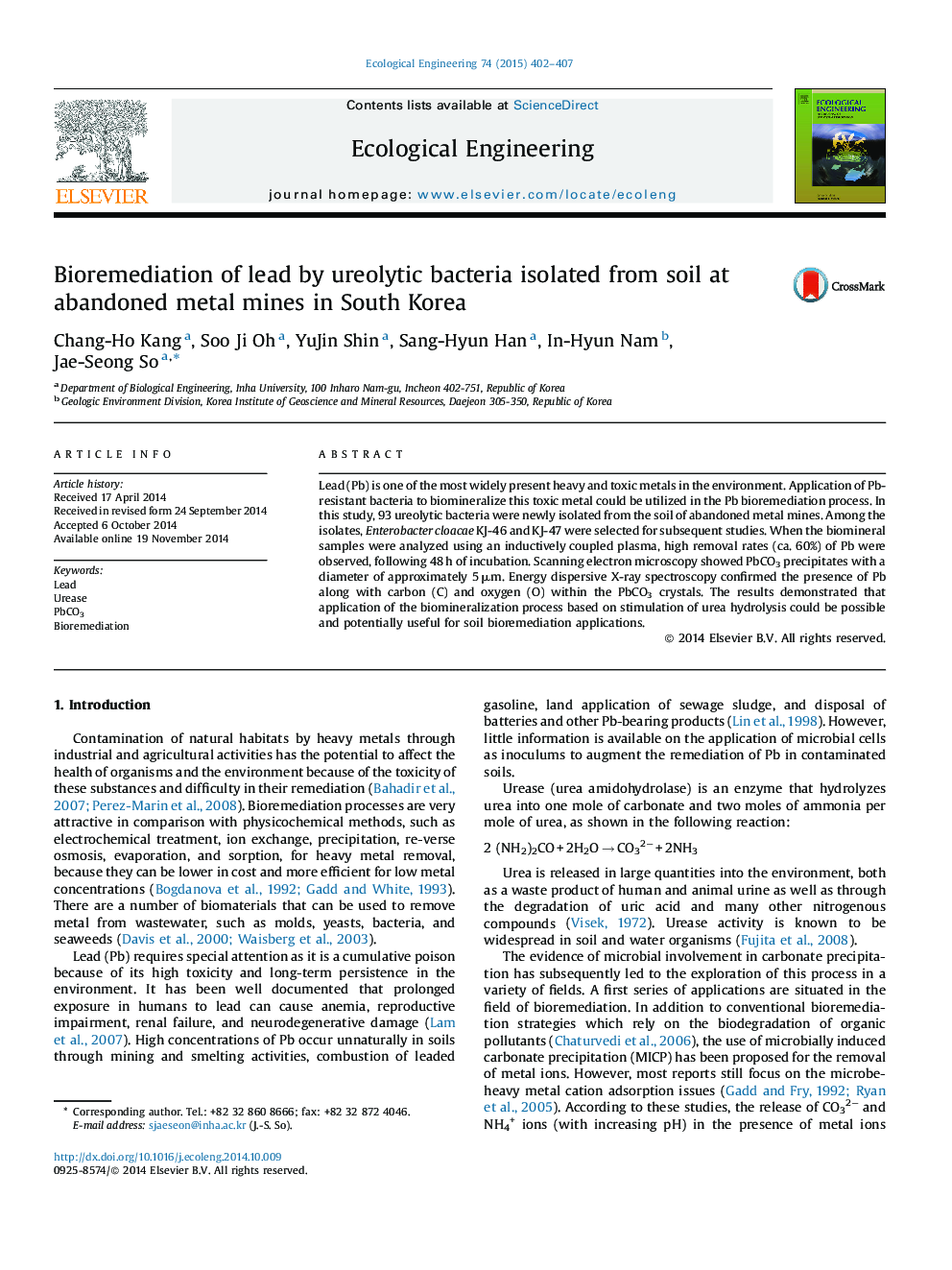| Article ID | Journal | Published Year | Pages | File Type |
|---|---|---|---|---|
| 4389333 | Ecological Engineering | 2015 | 6 Pages |
Lead (Pb) is one of the most widely present heavy and toxic metals in the environment. Application of Pb-resistant bacteria to biomineralize this toxic metal could be utilized in the Pb bioremediation process. In this study, 93 ureolytic bacteria were newly isolated from the soil of abandoned metal mines. Among the isolates, Enterobacter cloacae KJ-46 and KJ-47 were selected for subsequent studies. When the biomineral samples were analyzed using an inductively coupled plasma, high removal rates (ca. 60%) of Pb were observed, following 48 h of incubation. Scanning electron microscopy showed PbCO3 precipitates with a diameter of approximately 5 μm. Energy dispersive X-ray spectroscopy confirmed the presence of Pb along with carbon (C) and oxygen (O) within the PbCO3 crystals. The results demonstrated that application of the biomineralization process based on stimulation of urea hydrolysis could be possible and potentially useful for soil bioremediation applications.
